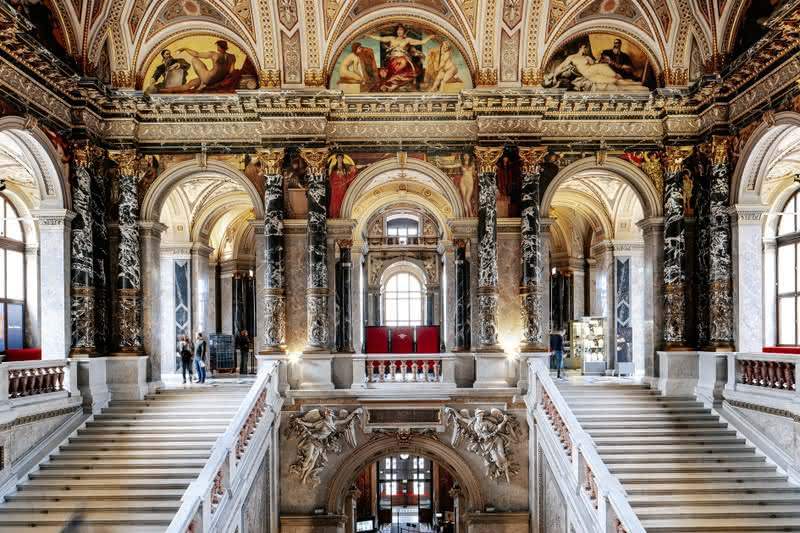NEMO - Network of European Museum Organizations, the leading network uniting European museums, released the results of a survey of 650 museums across the continent to assess the impact that the Covid-19 coronavirus health emergency has had on museums. A discouraging picture emerged: almost all museums are closed and have suffered major economic losses, the return to sustainable normalcy promises to be slow, and now the urgency is to call on governments to invest in the cultural heritage of European countries, “to support,” reads the report’s foreword, “what unites us all together. Museums may not change the world, but when they work to the best of their ability they can show what humanity can also do when it gives its best.” NEMO therefore calls for museums to have adequate support from European, national, regional, and local institutions in order to mitigate losses, ensure employment protection, and continue to invest in cultural projects. “Museums,” the foreword continues, “have been quick and proactive in responding to the pandemic. They have focused their attention in understanding the needs of their communities in this situation. From donating masks and gloves to hospitals to collecting objects and testimonies to preserve this historic moment and draw lessons from it, from increasing digital services to sharing collections, and from offering digital tools to engaging and comforting those forced to stay at home.” Finally, NEMO urges museums to become increasingly engaged in working on digital and finding alternative and more flexible ways of working in the future, as well as developing contingency plans.
We come to the results of the survey. As of April 3, 650 museums from 41 countries responded (all 27 member countries of the European Union, 9 countries that are not part of the EU but are part of the Council of Europe, and also the U.S., Philippines, Malaysia, French Polynesia, and Iran). In 92 percent of cases, museums are closed: exceptions include Sweden, Albania, and Austria. For many of those closed, the reopening date is not defined: predictions range from mid-April to as late as September (and in any case, everyone agrees that reopenings will have to follow the evaluation of the development of the epidemic in each country). As for economic losses, 30 percent of museums are losing up to 1,000 euros per week (the survey included small museums), 25 percent up to 5,000 euros per week, 13 percent up to 30,000 euros per week, and 5 percent over 50,000 euros per week. The major museums surveyed, such as the Rijksmuseum in Amsterdam, the Kunsthistorisches Museum in Vienna, and the Stedelijk Museum in Amsterdam, lose between 100,000 and 600,000 euros per week. The damage is especially severe for museums located in tourist locations: for them, losses are in the range of 75 to 80 percent.
The emergency also impacts loans: several exhibitions have been postponed, since it is expected that international transportation cannot be planned in the coming months. In addition, several museums have said that planned projects will be reconsidered due to the impact of the crisis on economic resources.
There is also good news, however: most museums, at least for the time being, have not had to lay off employees (70 percent of museums said they have changed employees’ jobs to better meet renewed demands). The bad news, however, concerns the self-employed: their contracts have been suspended in many museums. Also regarding work, half of the museums let it be known that 80 percent of employees are currently smart working from home. The modes for meetings are video conferencing (Zoom or Skupe) and chat programs (Teams or Whatsapp). Of the museums that participated in the survey, 28.2 percent have fewer than five employees, 16.4 percent fewer than 10 employees, 19.1 percent fewer than 20 employees, 16.1 percent fewer than 50 employees, 8.3 percent fewer than 100 employees, and 11.9 percent more than 100 employees.
Regarding digital, more than 60 percent of museums have increased their online presence, but only 13.4 percent have increased their funding for these activities. Also with regard to digital, many museums (more than 70 percent) are using social more than before (they work a lot on hashtags, and as far as platforms are concerned, 80 percent use mostly Facebook, while 20 percent use mostly Instagram), and the preferred modes seem to be storytelling about individual objects from the collections, virtual tours, and online exhibitions. There are also museums that have activated podcasts, live webcasts, or games. The tactic has paid off, as 40 percent of the museums reported an increase in online visits from the day of closure: of these, 41 percent noted a 20 percent increase in visitors per week, 38 percent an increase of up to 50 percent, 8 percent saw a doubling of accesses, and 13 percent saw them increase by between 100 percent and 500 percent.
Pictured: Vienna, the Kunsthistorisches Museum.
 |
| Museums around the world are having a hard time: 9 out of 10 are closed and reporting losses of thousands of euros |
Warning: the translation into English of the original Italian article was created using automatic tools. We undertake to review all articles, but we do not guarantee the total absence of inaccuracies in the translation due to the program. You can find the original by clicking on the ITA button. If you find any mistake,please contact us.